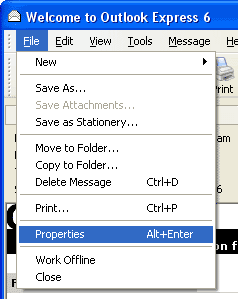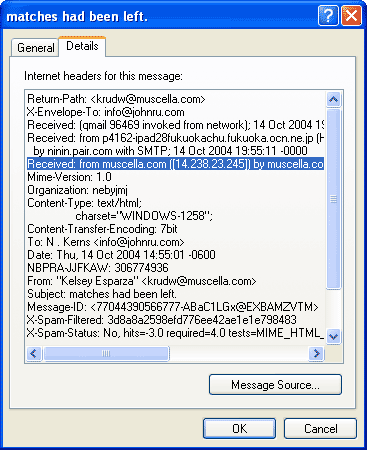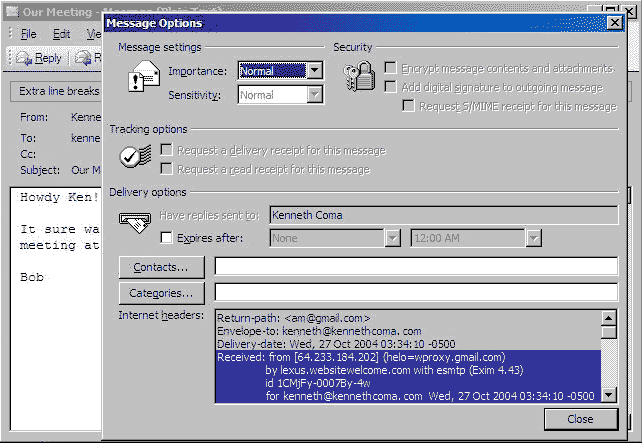For just a moment, try to comprehend the power of the Internet. Every day, there are millions of people from around the globe “surfing the web.”
People run their business from the Internet, search for love, research succulent recipes, plan vacations, and best of all – they SHOP! People that shop are always looking for a bargain, not just any bargain, but something spectacular.
The most popular public auction site, eBay, is where people gather to find anything from dishes to jewelry to houses and just about everything in between. Last year there was even a mother sold on eBay!
You can purchase amazing original artwork from China, have it signed by the artist, and shipped directly to your home. Perhaps you are trying to find 12 yards of Toile to reupholster your couch. You might even be looking for a new lawnmower or different power tools. The great news is that eBay has it all!
The other side of buying is the selling. Anyone can sell anything on eBay. Open an account, list your product, and wait for the bids to start coming in. There are secrets to being a power seller on eBay. While it is true that anyone can sell, to be successful, you need to know the inside secrets. One woman made over $250,000 last year on items sold on eBay. She is just one out of thousands and thousands of people that make a ton of money just selling merchandise.
Are you ready to learn how to be an eBay seller? You will find it to be easy, fun, and exciting.
1.
Collectibles
Collectibles
Hot sellers on eBay are collectibles such as coins, stamps, or dolls. You can check out the collectibles category to get a better idea of what people love to buy. Anything that will move up in value would fall in this category.
2.
Consumables
Consumables
This popular category would include anything that people use and then would need to buy again such as lotions, perfumes, camera film, candles, etc.
3.
Information Products
Information Products
In this category, you would sell anything that can be sent on a CD or floppy disc or downloaded from the Internet. This is another popular category.
4.
Start at Home
Start at Home
When you first get started, it can be a little unnerving. The best option is to start by looking around your own home. Think of items that you would sell in a garage sale. However, instead of pricing each item and lugging it outside hoping for a nice sunny day, you can advertise them on the Internet.
5.
Just eBay
Just eBay
Although there are several other quality auction websites, eBay is by far the most popular and most successful. Although you could start using all the other sites, by spreading yourself out too thin you take the risk of getting things mixed up. In reality, it is better to use eBay and focus your attention and efforts on this one site. You will not be disappointed.
6.
Look Around
Look Around
Navigate through each section to familiarize yourself with all the different pages. You will find a site map and help tab, which are very useful tools. It will take a little time to get used to the site but start by looking. As you start selling, navigating will become much easier.
7.
Quick Response
Quick Response
When you have an item listed on eBay and a potential buyer contacts you with a question, respond quickly. It is important and actually critical to your success to check your account several times a day. Answering a question could be the difference between you getting the sale or the buyer going elsewhere.
8.
Trustworthiness
Trustworthiness
It is extremely important that you handle your account with integrity. The number of positive comments and amount of stars earned are what will be the deciding factor for many buyers. Be professional, polite, and stand by what you sell.
9.
Accuracy
Accuracy
When you list your item(s) on eBay, write an accurate description. You do not have to write long paragraphs of rambling information but provide exact measurements, colors, condition, etc. Be extremely precise when it comes to your description.
10.
Buyer Contact
Buyer Contact
Once your item(s) have sold, be responsive to the buyer. Contact them in a quick manner, thank them for their purchase, and provide the required information for payment.
11.
Sending Items
Sending Items
In your description, provide accurate details regarding shipment. Make sure the item(s) are sent within the time you stated. In many cases, people purchase something for a specific purpose and if you do not ship it when stated, not only do you mess up their schedule for the item but you have probably lost a customer and opened the door for a negative feedback.
12.
Professional Wrapping
Professional Wrapping
When you wrap your item(s), wrap it professionally in nice, clean tissue paper. If breakable, be sure the item is wrapped with bubble wrap as well. Include a business card with your website information, name, address, or a printed out statement showing the item(s) name, item(s) number, price paid, and a small hand-written note thanking the buyer for their purchase.
13.
Payment Options
Payment Options
The more options you can provide potential buyers, the better your chances of making the sale. Your options include PayPal, which is an online payment service, Billpoint, eBay’s payment system, personal checks, money orders, or cash. Remember that you will have buyers from around the world so an online payment service is extremely helpful.
14.
Shipping / Handling
Shipping / Handling
You should always charge actual shipping costs. Several options can be added to your account that provides the actual costs. Another option is to state that you will provide actual shipping at the end of the auction, based on the destination zip code. Overcharging customers for shipping and handling is frowned upon and will result is unhappy customers.
15.
Insurance
Insurance
Insurance is usually a good idea but in general, it should be an optional feature, with the decision left to the buyer. Remember two important things about insurance. First, insurance is VERY inexpensive. Therefore, in your description, you should state how much insurance would cost and recommend it. Second, you should also state in the description that if insurance is not purchased, you are not responsible for lost or damaged items.
16.
Go the Extra Mile
Go the Extra Mile
You want every customer to be a happy customer. If you have to do a little more research on shipping, or negotiate on price, remember that the customer is the reason you will have success. Therefore, be prepared to go the extra mile in providing them with superior service every single time.
17.
Auction Price
Auction Price
Set your auctions low, which will help encourage more bidding. The more bidding you have, the higher the price will ultimately go. In addition, if you add a “Buy Now” option for your auction, keep this set at a reasonable rate as well.
18.
Listing Category
Listing Category
When you choose which category to list your items, choose wisely. You will find some categories that are similar yet just enough different that it could make a big difference in how your item(s) is sold. Look at other items listed and choose appropriately.
19.
Sell by Lots
Sell by Lots
If you have two or more of one item, you can list it as a “lot.” For example, if you had five bottles of suntan lotion purchased from a salvage store for .50 each, and you decided to list them on eBay for $1.00 each, rather than list each one separately, another option is to sell them as a lot. Often times, people perform their search based on lots. However, if you had one bottle of suntan lotion, one bottle of regular lotion, and one bottle of aloe vera, you would want to list them as their own item.
20.
Completed Items
Completed Items
Look through completed items to research the prices paid by buyers for other auctions similar to yours. This will provide you with a better idea of what a good asking price would be if you were not sure where to start.
21.
Photographs
Photographs
While auctions without photographs can and do sell, auctions with photographs sell much better. People like visualizations and want to see what their money is getting them. Make sure your photograph is clear, focused, and depending on the item (such as rings, shoes, etc.), offers more than just a straight view.
22.
Competitor Analysis
Just like any other business, you need to know what your competitors are doing. This will help you make the best possible decision when it comes to your own auction. Before listing your item(s), do a search for the same type item(s) to see what their descriptions looks like. Find different aspects from different sellers and use them to form one comprehensive site for yourself.
23.
Mister Lister
Mister Lister
If you have trouble listing your item, use eBay’s service, Mister Lister, to help you get your items listed with ease. This is just one of many outstanding services provided by eBay.
24.
Size and Weight
Size and Weight
If possible, stay with items that are smaller and lightweight. Remember that whatever you sell, you have to ship. Items such as furniture, lawnmowers, etc. are generally sold through a manufacturer or wholesaler. As an independent seller, you want to sell items that are easy to manage.
25.
Shipping Options
Shipping Options
Set up accounts with several overnight couriers such as Federal Express and UPS. Once again, the more options offered, the better your auction will be received.
26.
Weighing
Weighing
In order to provide accurate details and help in determining shipping costs, you need to know exact weights. The best option, which will save you many unnecessary trips to the post office, is to purchase an inexpensive quality scale for weighing your packages.
27.
Postage
Postage
Instead of always running out of stamps or having to run to the post office to ship a smaller item, fill out the information located at stamps.com where you can print stamps directly from your home computer.
28.
Shipping Rates
Shipping Rates
A quick and easy way to determine shipping costs is by visiting iship.com. This will allow you to provide shipping information to the buyer quickly, which in turn prompts quick payment.
29.
Reserve Auctions
Reserve Auctions
Instead of listing your auction starting at a minimum bid, you might try setting a low reserve price, which attracts some bidders. Once your item(s) sells eBay then refunds your reserve auction fee.
30.
About Me
About Me
This important page needs to be completed. This is your opportunity to brag to your customers about the excellent service and amazing products you provide. Tell buyers about your guarantees, your integrity, and anything you like to encourage buyers to check out your auctions.
31.
HTML Code
HTML Code
If you want to bring life to your auctions, you should try using HTML tags. A strong recommendation by eBay is to avoid flashing animations since they actually create a distraction from your items. If you do not know how to use HTML, eBay offers an HTML tutorial page or you can hire someone to do this for you for a reasonable fee.
32.
Weekend Listings
Weekend Listings
To increase your chance of selling your item(s), work the amount of time you choose for your auction (7 or 10 days) to end on a weekend (there are some exceptions listed further down). The reason is that more bidders visit eBay on the weekends and since people jump in at the last minute to get a bargain, you increase your chance of a sale.
33.
Headlines
Headlines
Do not add symbols such as asterisks (***) in your headlines. Although they may add a little punch to your headline, they also mess up how your auction is posted since asterisks are a part of HTML code. In fact, if you use asterisk, there is a high probability that your auction will not even show up.
34.
NetMechanic.com
NetMechanic.com
If you have a photograph that is too large for eBay’s specifications, you can shrink them down using netmechanic.com. When you first get started, working with photographs can be a little challenging. Do not give up – eBay offers this service for this very reason.
35.
Checkout
Checkout
If you choose to use eBay’s checkout system, make sure every box is checked when you list your item(s). This option can be helpful when used correctly, but can also be confusing.
36.
Community Boards
Community Boards
Pay attention to the community boards provided by eBay. They offer valuable information and helpful tips that can ultimately save you time and effort.
37.
Flaws
Flaws
Advise potential buyers of any flaws in your products. If you are selling a plate that has a small chip, mention this in the description. If you are selling fabric and it has a small tear, disclose this information. The majority of eBay buyers are looking for bargains, which means minor defects can often be overlooked. The worse possible scenario would be to keep a flaw hidden and then have to deal with handling returns as well as losing a buyer.
38.
Negative Feedback
Negative Feedback
Unlike other sites that use a feedback system, eBay’s feedback is sacred and taken very seriously. Negative feedback is never removed. Therefore, if you leave negative feedback rather than trying to handle a tough situation between you and the seller, this could give you a bad reputation. If people see that you consistently leave negative feedback because your buyer did not pay as quickly as you like or whatever reason, buyers will be leery of buying from you in fear of getting negative feedback themselves should something go wrong.
39.
Second ID
Second ID
One of the great features on eBay is the benefit of having more than one ID. If you will be doing a lot of selling, this doubles or triples your chance of selling and setting up different types of auction sites.
40.
PO Freebies
PO Freebies
If you use the Priority Mail option through your post office, they will provide all your supplies free. This would include boxes, labels, and tape. Best of all, they deliver all these supplies directly to your door. In addition, go to USPS.com or UPS.com and request mailing supplies.41.
Post Office Box
Post Office Box
Rather than use your home address, rent a mailbox at your local post office. This maintains the security of your home address while ensuring that everything comes and goes out of one place. These boxes are very inexpensive and well worth the small investment.
42.
eBay Canada
eBay Canada
When you get ready to sell items on eBay, consider signing up for eBay.ca (Canada). The Canada site is not as large as the US version of eBay so there are considerably fewer listings, which means that you have a greater chance of selling your item(s) since there is less competition.
43.
Excluded Items
Excluded Items
Although eBay accepts just about every type of item, there are a few exclusions such as explosions, corrosive material, etc. Before you go through the entire process of listing your item(s), make sure you are not listing something forbidden by checking out the do’s and don’ts listed on eBay.
44.
Category Guide
Category Guide
Use eBay’s Category Guide, which is a helpful tool to ensure you place your auction item(s) in the appropriate category.
45.
Auction Title
Auction Title
Just as using a strong title for a book, your eBay auction title needs to captivate buyers. You are allowed 45 characters for your title and you need to use common words that will draw attention. Use this space carefully and to your advantage. Think of words that will be easily found when people conduct a search. For example, if you are selling six yards of fabric you could say something like, “Stunning material – Don’t miss this great bargain.” If you are selling fishing poles, try something like, “Love to fish? GREAT buy on fishing poles!” Since the search option on eBay looks for specific characters, you should try to list the item both singular and plural. As an example, for the fishing poles, you could list the auction as, “Fishing Poles – Get your fishing pole now!” Avoid wasted words such as WOW or Look Here. Buyers are looking so there is no need to tell them to look. Again, as buyers looking through the listings, the titles are what will capture their attention. Make your impression a strong one!
46.
Abbreviations
Abbreviations
Saving space in titles can be important if you have a longer description. Look at other auctions selling the same type of merchandise to get an idea of the types of abbreviations that will work. As an example, you could write, “Do U love to fish?” or “Gorgeous material 4 sale.”
47.
Buyer’s Questions
Buyer’s Questions
When you write your description try to think of questions buyers may have so your description will answer as many possible questions as possible. This will save time in relaying messages back and forth. This would include the manufacturers’ name, condition of the item(s), special features, warranties, color, defects, etc.
48.
Focus
Focus
Before you post your photos, make sure they are focused, aligned, centered, etc. A bad photo can stop the sale of your item(s) just as a good photo can help make the sale. In addition, if there is a difference, even slight, in color from what the actual item is and how it shows in the photo, be sure to describe any discrepancies in detail.
49.
Pricing Methods
Pricing Methods
If you find that starting a price low and building is not working for you, try various pricing methods to find the one that you are comfortable with using. A great feature now offered by eBay is fixed pricing, which is something many people like to use.
50.
Page One
Page One
The very first page is the sell form where you will find three choices. This is a valuable forum where you will determine your pricing method. Do not skim through this page but read all the detail and make good choices.
FOR MORE TIPS PLEASE FOLLOW MY BLOG FREQUENTLY




























